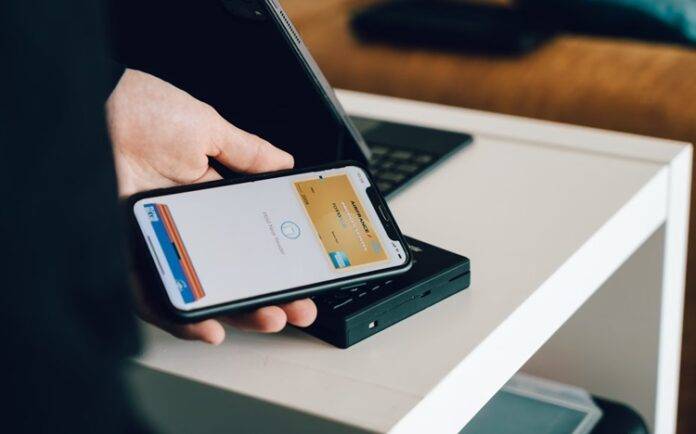Even though keeping cash and credit cards in your pocket presents fast and easy access to funds for daily transactions, they both carry significant risks. Think of thieves stealing your wallet or fraudsters obtaining your credit card information. Also, consider the inconvenience of waiting for a small change at the point of sale. As a result, more consumers are switching to mobile payments across diverse distribution channels.
According to GSMA State of the Industry Report, at least 1 trillion US dollars worth of transactions were transacted via mobile wallets globally in 2021. It is an increase of 31% from the previous year, contributing $600 billion in total GDP to countries worldwide. The contribution is almost 1.5% higher than it would have been if these countries operated without mobile money.
This indicates more global consumers are using mobile wallets to make payments. And even more are willing to switch from their current payment channels to mobile payments. These options offer several benefits compared to cash or credit cards.
Our quick guide explores what mobile wallets are, how they work, their benefits, and some popular options.
An Overview of Mobile Wallets
A few decades ago, sending money remotely was unheard of. Then came the digital wallets, mobile wallets, or eWallet apps, fueling a revolution in the fintech industry. These electronic software facilitate paperless and cardless transactions by storing bank card information in one place. They are like a trusted friend who keeps money on your behalf and pays the exact amounts when transacting.
A mobile wallet is simply a specific category of digital wallet technology. It stores credit or debit card information on a mobile device and it’s accessible through a mobile app.
How They Work – Tap and Pay, Be On Your Way
To use digital wallets on the phone, you first need to download and install them. Next, add your debit or credit cards as payment options. Then, when shopping, look for the digital wallet symbol at check out and tap your phone on the NFC reader or QR scanner. You are now able to select your preferred bank card, specify the transaction amount, and enter the security password or biometric to authorize the payment.
Mobile wallets can also be used to transfer funds from one person to another. You can set up more than one wallet to use for online and offline payments.
Apple Pay, PayPal, Google Pay, Samsung Pay, Cash App, Venmo, Zelle, Samsung Pay, WeChat Pay, and Wise are some of the common types of the mobile payments market. In 2022, Apple Pay commanded 92% of the market share. It handled up to $6 Trillion in global payments.
According to Capital One Shopping Research, there will be 60.2 million Apple Pay users in the United States in 2024. They are to reach 75 million by 2030. Even though US digital wallet brands dominate the mobile payments sector, the use of mobile wallets is not a US or European trend. Instead, the majority of mobile payments take place in Asia and are fast gaining popularity in Africa and the Middle East.
Benefits of Switching to Mobile Money Payment Options
Below is a summary of the six top benefits of using digital wallets:
1. A Convenient Mode of Payment
Mobile wallets can store multiple payment information from bank cards, loyalty cards, gift cards, and prepaid cards. It minimizes, if not eliminates, the number of physical cards and cash you need to carry. By reducing our carbon footprint, mobile wallets assist in slowing down the effects of climate change, leading to environmental sustainability.
2. Easy to Use, Contactless Transactions
Completing a transaction on a mobile app is fast and easy. All it takes are a few taps on your phone and a click on a computer, and your purchase is complete. For example, players on MGA casino sites can make seamless deposits and withdrawals all thanks to mobile wallet integration. These platforms also offer a variety of options to use, making it easier than traditional bank transfers.
3. Accessible, Versatile Option
Mobile wallets are accessible anywhere, anytime, and across diverse payment merchants and platforms. All you need is a reliable internet connection. Plus, they easily integrate with other convenient services like ride-sharing apps like Uber, e-commerce platforms like eBay, and fitness apps like Fitbit for a holistic user experience.
4. Secure and Safe
Mobile wallets use tokenization and encryption technologies to safeguard the user’s sensitive data. Also, they rely on biometric authentication to reinforce its security features. That way, there is no risk of fraud or erroneous transmission of sensitive data to a third party when transacting.
5. Facilitates Expense Tracking & Budgeting
Mobile wallets have additional features like viewing transaction history, allowing users to track and keep tabs on their expenditures. Also, its bill payment capabilities facilitate settling recurring utility bills directly from the mobile app.
6. Offers and Reward Programs
Various mobile wallets have lucrative reward programs and offers for their loyal clients. Here, users can accumulate points with every transaction and redeem them for cashback, discounted purchases, or zero transaction fees.
Final Thoughts
We are in a digitization era where billers are under pressure to diversify their payment choices. The demand is fueling the rise of mobile payments and other digital wallets worldwide. Mobile payments are convenient, fast, easy to use, and easily integrated with other apps for an optimal consumer experience. And, if the recent statistics are anything to go by, we anticipate mobile wallets to become our daily way of life, completely replacing physical cash and bank cards.



















